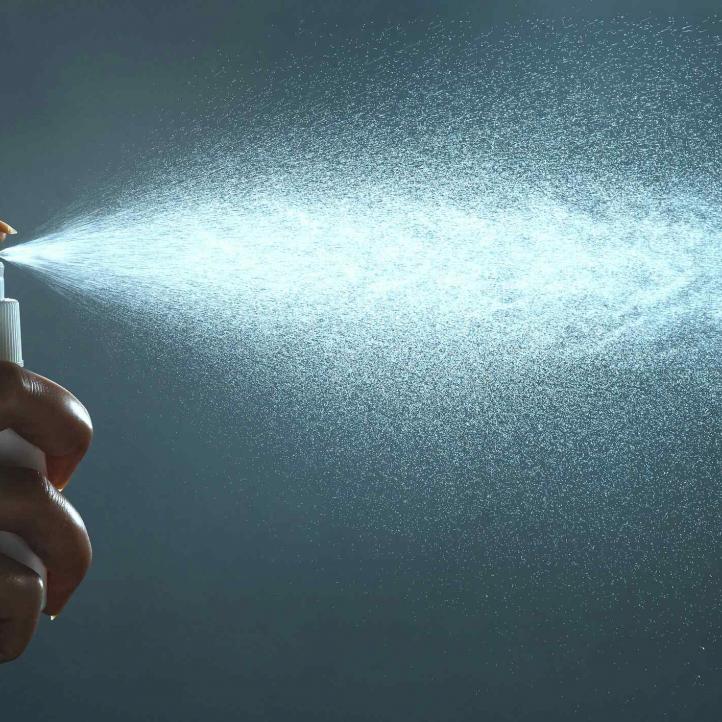ISO 7581:2023
Healthcare associated infections have long been a major cause of illness and mortality worldwide with an estimated 5 million cases, and 135,000 deaths per year, in Europe alone. In recent years, surfaces or materials have been treated with, or incorporate, biocidal products or certain metals to claim bactericidal properties to protect the user. As a user of these treated articles, such as hospital privacy curtains, beside units and high-touch plastics, how do we know these surfaces are fulfilling their claims to help protect us? The newly published ISO 7581:2023 Standard, Evaluation of bactericidal activity of a non-porous antimicrobial surface used in a dry environment addresses the need for these surfaces to adequately demonstrate their biocidal efficacy under ambient conditions found in healthcare facilities. The method utilises the standard vegetative bacterial test organisms typical of the medical area: P. aeruginosa, S. aureus, E. hirae and E. coli and simulates the contamination of a surface by a microdroplet, such of that representative of a sneeze. The Standard is designed to determine the bactericidal (not bacteriostatic) activity of non-porous surfaces within a 60-120 min contact time, between 18-25°C with a relative humidity between 30% and 65%; the pass criteria is ≥ 2 log reduction in bacteria under these test conditions.
How does this differ from the existing ISO 22196:2011?
Whilst the ISO 22196:2011 Standard already exists to measure the antibacterial activity of plastics and other non-porous surfaces, its test method relies on > 90% humidity for 24 h which is unrealistic in most healthcare environments. Until now, there has been no other suitable test standard for treated articles with antibacterial claims and therefore ISO 22196 has been commonly used. This test method, however, only has limited use for simulating the final use of many treated articles as required by the ECHA Guidance on the BPR: Vol. II: Efficacy Parts B+C V6.0. Testing performed for these treated materials is not always adapted suitably or representative (i.e. wet or humid) for the final product’s conditions of use, and so, providing supporting test results unrelated to the relevant use conditions and claims are rarely accepted by the authorities. For instance, the ECHA guidance states that test conditions must accurately reflect the use conditions of the treated article e.g. temperature and humidity (Tier 1: proof of principle), soiling, and cleaning regimes (or weathering and ageing as examples for preservative uses) (Tier 2: simulated use) as well as in some cases, relevant field studies utilising statistically designed use trials with a representative user group (Tier 3: in-use evaluation / field studies). It is therefore important to understand the guidance as well as the use patterns and anticipated claims of the treated article before pursuing any testing for BPR purposes. In some cases, testing may have been performed on the treated article in the required humid conditions but may not be relevant to its final use, or vice versa, the article tested in relevant use conditions but failing to show the effect required to meet the BPR Tier 1 efficacy requirements. For example, a hospital seat cover or door handle will rarely be wet or moist for 24h to reflect the ISO 22196 testing procedure and so the test results will not support the product claim for its actual use. In contrast, for a treated door of a hospital shower cubicle or an antimicrobial shower sealant product, the required humidity of the test procedure will likely be appropriate and accurately reflect the final use of the treated article.
How does ISO 7581:2023 solve this problem?
In comparison to ISO 22196, the dry environment simulation of ISO 7581 applies a 30 - 65% humidity and a shorter contact time requirement, which is more realistic to ambient room conditions in healthcare facilities. This is suitable for treated articles used in normally dry conditions, active substances not requiring moisture to be activated, and for high touch areas where surface claims need faster acting biocidal properties (within 1-2 h). The ISO 7581 test methodology sets these conditions as the standard parameters, but the testing procedure can be modified to better reflect the use conditions of the final article, where soiling, ageing or specific microorganism efficacy may also need to be demonstrated.
In the near future, ISO 7581 will be updated to include interfering substances and adapt the microbial strains, efficacy and contact time specifications to meet the need of other sectors, outside of the medical field, where treated articles containing these bactericidal coatings or materials are also used. A method for simulation of ageing will also be a welcome addition in the upcoming revisions by ISO/TC 330 to support the Tier 2 EU BPR requirements.
For more information on the applicability of these test standards to your biocidal treated articles, or for help developing a BPR testing strategy, please contact the knoell Biocides team here or check out our website.


